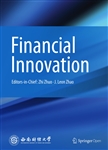Does the EVA valuation model explain the market value of equity better under changing required return than constant required return?
作者机构:Institute of ManagementNirma UniversityB-301 Aditya GreensNear Sahajanand City BunglowNear Sona Cross RoadNew C.G RoadS.G.HighwayAhmedabadGujarat 382424India
出 版 物:《Financial Innovation》 (金融创新(英文))
年 卷 期:2020年第6卷第1期
页 面:149-172页
核心收录:
学科分类:120202[管理学-企业管理(含:财务管理、市场营销、人力资源管理)] 12[管理学] 1202[管理学-工商管理]
主 题:Economic value added(EVA) Capital asset pricing model(CAPM) Expected market value of equity under constant required return(EMVEUCRR) Expected market value of equity under varying required return(EMVEUVRR)
摘 要:Through the Economic-Value-Added(EVA)valuation model,the expected market value of equity can be determined by adding the book value of equity with the present value of expected EVAs under the assumption of constant required return and constant return on *** equation of EVA valuation model has taken its shape under the assumption of constant required return and constant return on ***,a large body of empirical evidence indicates that required rate of return never remain *** EVA-valuation model formulated under constant required return cannot be implemented under the scenario of changing required *** this study,we explored whether the EVA valuation model could be implemented under changing required return by making any changes in the model and found that it could be implemented under the scenario of changing required return by replacing the book value of the equity of the existing model with the present value of required earnings or normal market *** further examined whether the explanatory ability of the EVA valuation model under the assumption of changing required return is better than that of the valuation model under the assumption of constant required *** information content analyses were conducted by considering sample of the intrinsic value of equities determined by valuation models and the market value of equities of 69 large-cap,88 mid-cap,and 79 small-cap *** results showed that the EVA-based valuation model with changing normal market return outperformed the EVA-based valuation model with constant required return.



